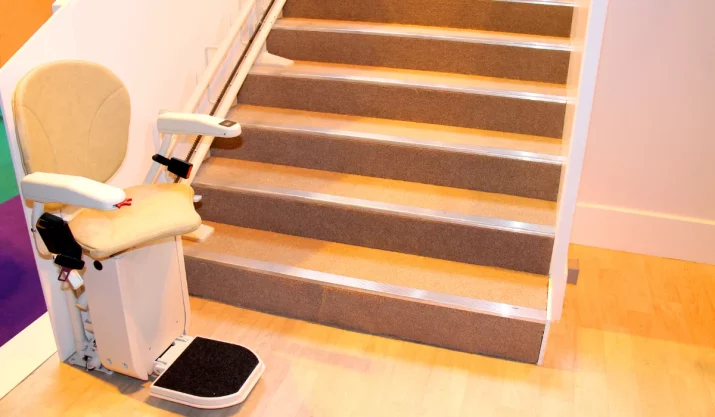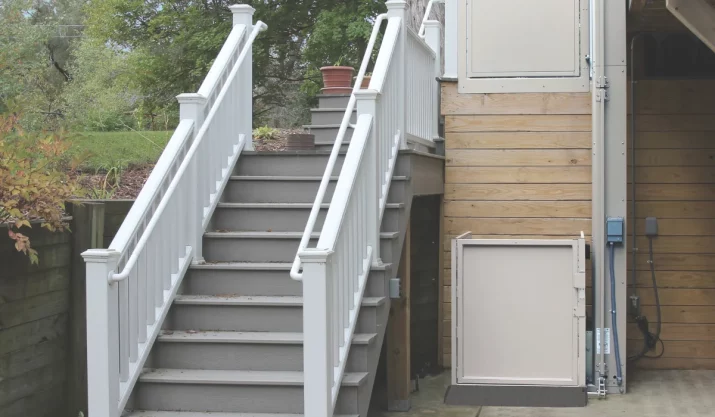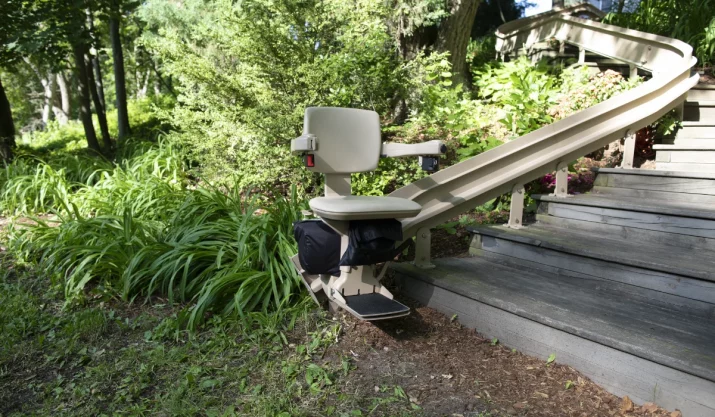How to Make a Split-Level Home Safe for Seniors

Table of Contents
- Key Takeaways
- Install a Stairlift for Short Flights of Stairs
- Improve Lighting in Stairwells and Living Spaces
- Address Uneven Floors and Trip Hazards
- Secure Gates if Young Children Live In or Visit the Home
- Widen Tight Walkways and Doorways
- Create a Resting Spot on Each Level
- Make Landscaping Transitions Safer
- Check Building Codes Before Starting Renovations
- Safe Living Between Different Levels Starts Here
Split-level homes offer a unique layout, often more character, natural light, and separation of space than a traditional one-story or two-story house. But when you’re caring for an aging parent or thinking ahead for your own needs, the very things that make them appealing can also present real safety concerns.
Fortunately, with the right adjustments, you can keep the charm of your home while making it safer and easier to navigate.
Here’s how to make a split-level home safe for seniors, without sacrificing comfort or functionality.
Key Takeaways
- Stairlifts make short staircases safer and easier to use for seniors living in a split-level home.
- Better lighting and smoother floors help prevent falls in stairwells, living spaces, and high-traffic areas.
- Baby gates, wide walkways, and nearby resting spots make homes safer for seniors and young children together.
- Outdoor walkways and indoor remodeling projects should follow safety codes to protect seniors in California homes.
Install a Stairlift for Short Flights of Stairs
One of the biggest challenges in a split-level home is the number of staircases.
Even though they’re often short, climbing them multiple times a day can wear on the knees and hips. Installing a stairlift on these half-level staircases creates a safe and convenient way to move between floors.
Many California homeowners are surprised to learn how small and quiet modern stairlifts can be, and how well they can fit into the design of a home without disrupting the flow of the living area.
Improve Lighting in Stairwells and Living Spaces
Natural light may flood your main level during the day, but stairwells and corners of the lower level or upper level can stay dim. Poor visibility increases the risk of missing a step or stumbling on an object.
Add lighting to staircases, especially near the top of the stairs and bottom landings. Consider motion-sensor lights for nighttime use. Poor lighting is linked to an increased risk of falls, particularly on stairs and in hallways.
If your home has an outdated layout, even a new window or upgraded glass doors in the entryway or family room can make a difference in overall visibility.
Address Uneven Floors and Trip Hazards
Split-level homes are full of transitions between surfaces, tile in the entryway, carpet in the living room, and hardwood in the dining room. Any uneven flooring can become a trip hazard. Threshold ramps or smooth transitions can help.
Rugs should either be removed or secured with a non-slip backing. And if remodeling is in your plans, consider leveling out flooring transitions to reduce the number of times feet must adjust throughout the day.
Secure Gates if Young Children Live In or Visit the Home
While baby gates are often associated with toddlers, they can serve an important safety role for seniors, too, especially if your split-level home is also shared with grandchildren.
Blocking off staircases or open areas in the main living areas keeps both older adults and young children safer. Just make sure gates are sturdy, easy to operate with one hand, and don’t create additional hazards.
Widen Tight Walkways and Doorways
Older split-level homes, especially bi-level styles built in the 60s and 70s, often have narrow walkways between the living room and dining room or around the front door.
If you or a loved one uses a walker or simply needs more space to move comfortably, widening these passageways can prevent bumping into walls or losing balance.
Some homeowners choose to modify their open floor plan slightly to improve maneuverability without changing the character of the space.
Create a Resting Spot on Each Level
Seniors may not need to sit down for long periods, but having a chair or bench near the top of the stairs or in the entryway can be a big help.
If someone feels tired halfway through the day or needs to rest after coming in the front door, a simple seat can prevent pushing through fatigue, which often leads to falls.
Look for spots where foot traffic naturally slows, like the main level landing, and place seating there.
Make Landscaping Transitions Safer
Walkways, steps, and pathways in front or back yards should be just as safe as the indoor areas. In California, where outdoor living is part of everyday life, uneven concrete or loose gravel near entry points can become serious hazards. Make sure the path to the front door and garage is flat, well-lit, and free of debris.
Place raised planters or yard features where they don’t create blind spots.
Check Building Codes Before Starting Renovations
If you’re planning home improvements to make your split-level home safer, always check local building codes, especially in California, where codes can vary by county. For example, adding an indoor stairlift or modifying the crawl space under the lower level might require specific permits.
Working with professionals who are familiar with both accessibility needs and local regulations helps ensure the remodeling is both safe and legal.
Safe Living Between Different Levels Starts Here
If you’re thinking about making a split-level home safer for yourself or a loved one, it doesn’t have to mean giving up on style or comfort. A stairlift, improved lighting, and thoughtful adjustments to your home’s layout can preserve the character of your space while making everyday movement easier.
At California Mobility, we’ve helped thousands of homeowners across the state make their homes safer, without the hassle of major renovations. Whether you’re ready to install a stairlift for a short flight of stairs or just need guidance on the best modifications for your family, we’re here to help.
Reach out now to learn more about how we can make your split-level house safe and livable for years to come.








